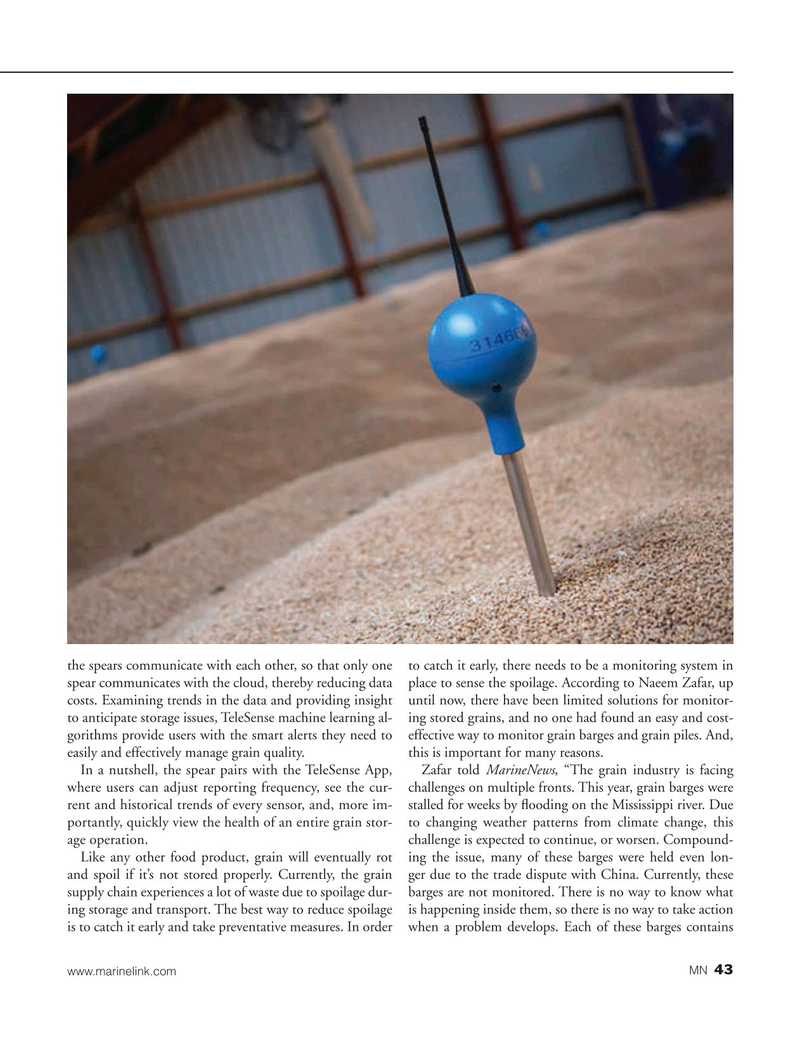
Page 43: of Marine News Magazine (January 2020)
Passenger Vessels & Ferries
Read this page in Pdf, Flash or Html5 edition of January 2020 Marine News Magazine
the spears communicate with each other, so that only one to catch it early, there needs to be a monitoring system in spear communicates with the cloud, thereby reducing data place to sense the spoilage. According to Naeem Zafar, up costs. Examining trends in the data and providing insight until now, there have been limited solutions for monitor- to anticipate storage issues, TeleSense machine learning al- ing stored grains, and no one had found an easy and cost- gorithms provide users with the smart alerts they need to effective way to monitor grain barges and grain piles. And, easily and effectively manage grain quality. this is important for many reasons.
In a nutshell, the spear pairs with the TeleSense App, Zafar told MarineNews, “The grain industry is facing where users can adjust reporting frequency, see the cur- challenges on multiple fronts. This year, grain barges were rent and historical trends of every sensor, and, more im- stalled for weeks by ? ooding on the Mississippi river. Due portantly, quickly view the health of an entire grain stor- to changing weather patterns from climate change, this age operation. challenge is expected to continue, or worsen. Compound-
Like any other food product, grain will eventually rot ing the issue, many of these barges were held even lon- and spoil if it’s not stored properly. Currently, the grain ger due to the trade dispute with China. Currently, these supply chain experiences a lot of waste due to spoilage dur- barges are not monitored. There is no way to know what ing storage and transport. The best way to reduce spoilage is happening inside them, so there is no way to take action is to catch it early and take preventative measures. In order when a problem develops. Each of these barges contains 43 www.marinelink.com MN

 42
42

 44
44
